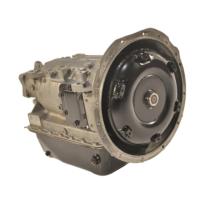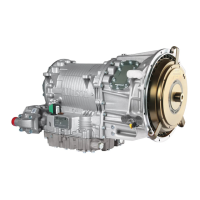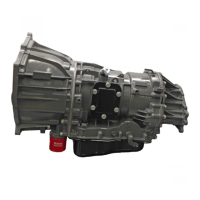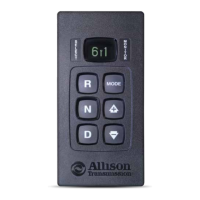COLD CHECK
The Cold Check determines if the transmission has enough fluid to be operated
safely until a Hot Check can be made.
NOTE: The correct fluid level can not be determined unless the
transmission is in a level position.
CAUTION: DO NOT start the engine until the presence of sufficient
transmission fluid has been confirmed. Remove the transmission fluid
dipstick and be sure the static fluid level is near the HOT FULL mark.
CAUTION: The fluid level rises as fluid temperature rises. DO NOT fill
the transmission above the “COLD CHECK” band if the transmission
fluid is below normal operating temperatures. During operation, an
overfull transmission can become overheated, leading to transmission
damage.
A cold check may be made after initial start-up and the presence of transmission
fluid has been confirmed (the sump fluid temperature is then typically 16°–49°C
(60°–120°F). To perform a COLD CHECK, do the following:
1. Start the engine and run it at idle (500–800 rpm) in N (Neutral) for about
one minute.
2. Shift to D (Drive) and then to R (Reverse) to clear the hydraulic circuits of
air.
3. Shift to N (Neutral) and leave engine at idle.
4. Move the vehicle to a level surface, put transmission in N (Neutral), and
set the parking brake.
5. With the engine idling (500–800 rpm), shift to D (Drive) and then to
R (Reverse) to clear air from the hydraulic circuits.
6. Shift to N (Neutral) and leave engine at idle.
7. Remove the dipstick and wipe it clean. Insert the dipstick into the fill tube,
pushing down until it stops.
8. Remove the dipstick and observe the fluidlevel.Ifthefluid on the dipstick
is within the COLD CHECK band, the level is satisfactory. If the fluid
level is not within this band, add or drain fluid as necessary to bring the
level within the COLD CHECK band.
9. Perform a Hot Check at the first opportunity after normal operating
temperature (71°–93°C; 160°–200°F) is reached.
57

